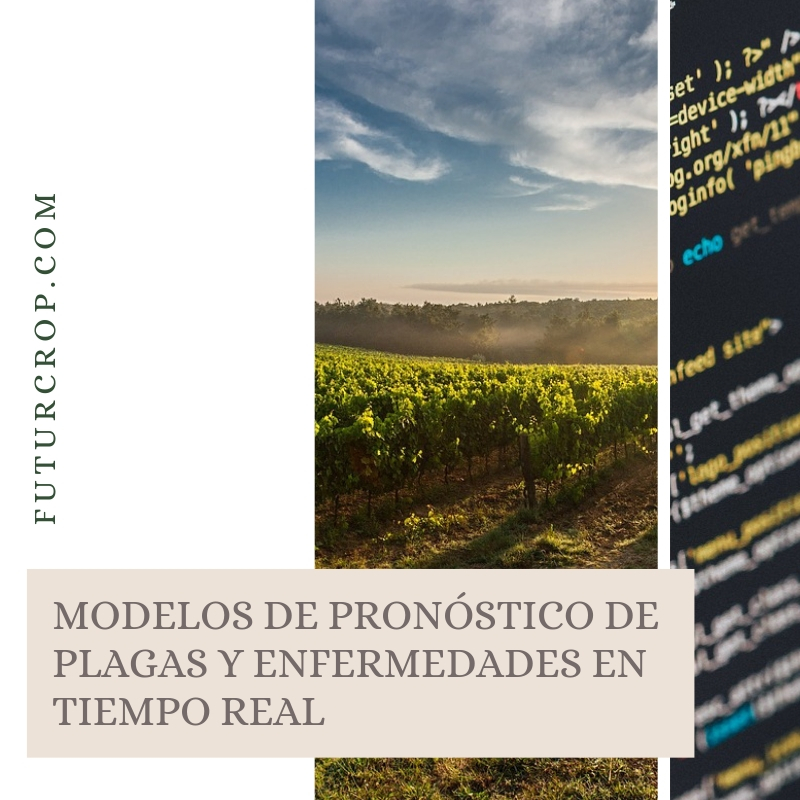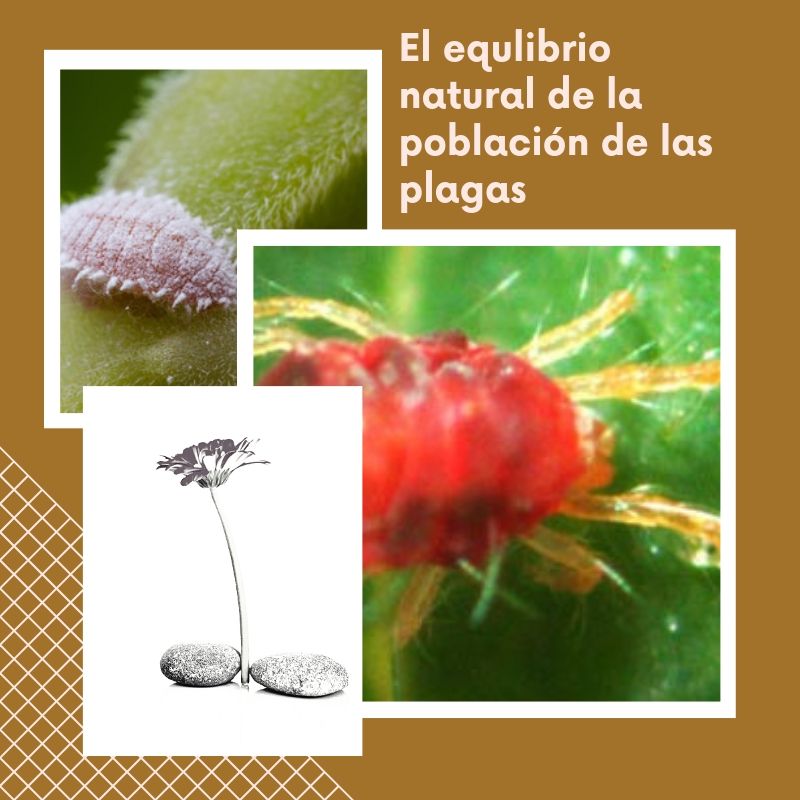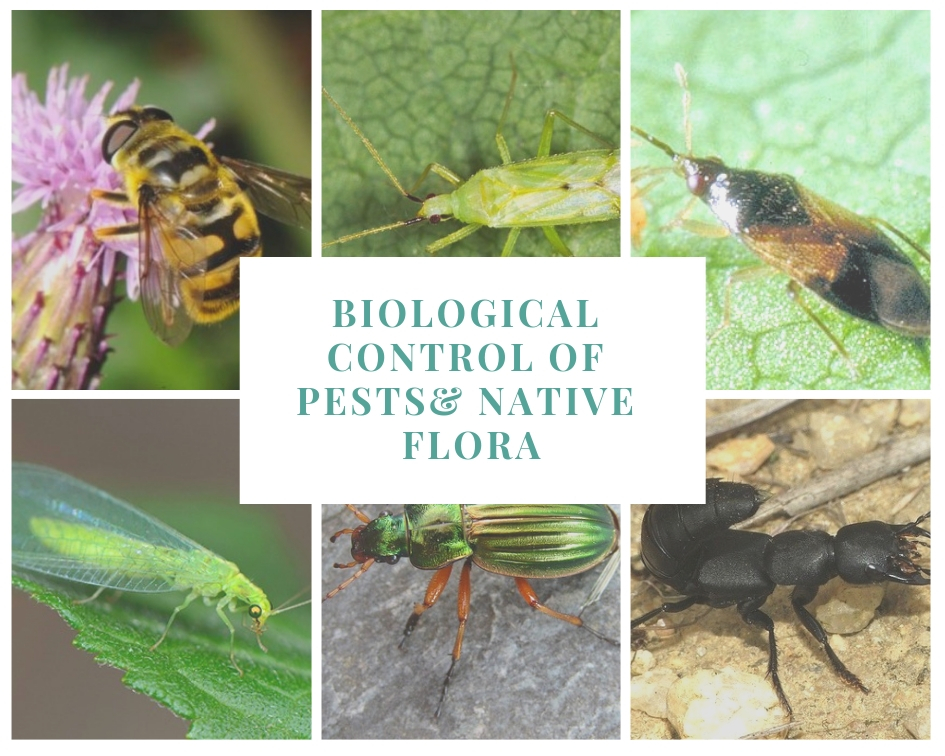Real time pest and vegetable diseases prediction models

Futurcrop - 16-04-2019
Currently, pest management techniques have changed drastically due to the following circumstances:
- Global Warming, which influence in a greater presence of pests throughout the year, in shorter biological cycles, and in the displacement of pests to areas where the climate previously prevented their development.
- Transnational trade transports pests to new areas, now with temperatures where they can develop, and where they have no natural enemies to control them. These transboundary pests cause serious damage to crops because in general they are not properly identified and there is no habitual knowledge about their management and control.
- The current and predominant agricultural production system, that uses chemical insecticides repeatedly, usually causes the development of pest resistance to insecticides. Chemical treatments are usually carried out without considering the stage of development of the pest, nor the conditions of the crop and in many cases without a real risk. Chemical treatments of a preventive nature are simply carried out, and according to calendar dates. Unnecessary applications imply unnecessary contamination, to the environment and to the crops themselves.
- Current legislation tends to demand the sustainable use of phytosanitary products, by reducing their risks and their effects on human health and the environment. The same legislation encourages the use of integrated pest management techniques, and alternative approaches or techniques to chemical methods.
In addition, there is currently scientific evidence on the effects of chemical insecticides on the environment and on the health of agricultural workers, such as recent studies on their harmful effect on pollinators, or the development of diseases in applicators who do not adequately use the protection equipment.
The reality is that most of the chemical treatments carried out are unnecessary, inefficient, and late in a 30% of cases. In order to solve this problem the agricultural producer needs to take more efficient decisions, more information about the real state of the biological development of the pest and the real risk of the disease. A system of information and prediction of pests and diseases such as FuturCrop allows the agricultural producer to assist in making decisions to carry out treatments against agricultural pests only when they are necessary.
In order to be efficient in pest management, the agricultural producer nowadays has systems that allows him to make efficient decisions for the management of plant pests and diseases. These systems allow to optimize and minimize the number of phytosanitary treatments, maintaining a level of control over pests and diseases superior to the one obtained at present.
The parameters used to determine the risk and the best possible moment to carry out the phytosanitary treatment are basically climatic, the type of pest or disease, and those related to the type of host. The availability of this information allows to determine exactly when it is necessary to sample or perform a treatment.
The use of these information models for decision making in the management of pests and diseases allows a considerable reduction in the number of applications with phytosanitary products, compared with the treatments carried out per calendar. And it is possible to get a reduction of chemical insecticides that can range between 30% and 50%.
Reasons to use forecast models of pests and diseases
- Because it provides information that allows efficient decision making.
- Because it allows to carry out the treatments only when necessary.
- Because many pests are vectors of viral diseases. So, by efficiently controlling the pest, the risk of crops suffering from the disease is greatly reduced.
- Because certain pests, characterized by outburst of population that are uncontrollable, can be easily controlled in the larval stages of their first generations.
- Because crops can be protected in their most critical growth states.
- Because the quality of the product is improved by reducing the number of chemical treatments, and therefore reducing the amount of chemical residues in crops, especially fruits and vegetables.
- Because nowadays farmers have fewer products to perform treatments, and at the same time they have the need to apply fewer treatments due to economic and legislative reasons.
Advantages for document management
- In Spain, Royal Decree 1311/2012, of 14 September, which establishes the framework for action to achieve sustainable use of plant protection products (which follows the guidelines of the Regulation of Parliament and Council No. 1107/2009, and Directive 2009/128 / CE) establishes that the treatments have to be registered in a field notebook, and economically and ecologically justified. The automatic modeling of the phenological state, the registration of the thermal integral that affects the development of the pests, the prediction of the biological development of the pest and the determination of the date of change of the biological stage of the pest, or of the risk of the disease , constitutes the adequate justification for the treatment.
- The register of monitoring, damage and treatments, and the corresponding reports facilitate traceability.
FuturCrop uses 179 pest models and 8 disease models affecting more than 45 crops
Unlike other support systems in pest management decisions, FuturCrop does not need the installation of a weather station, and the process of capturing and analyzing data is fully automated. FuturCrop sends warning messages when the adequate circumstances occur for the development of the pest, and the biological moment in which it is found, thus increasing both the effectiveness of monitoring and treatment. In addition, the computer application allows to predict the moment for the pest next biological event. For the proper functioning of the disease models, the system needs leaf moisture data, being compatible with any model of meteorological station or sensor. With this information FuturCrop establishes the risk levels of the disease, allowing preventive actions.
The use of new information technologies facilitate the sustainable development of agricultural production. In this sense, FuturCrop has been designed to provide an affordable and reliable support software for decision making in the management of pests and diseases, which can be used by both large landowners and small agricultural producers, so that the information that provides contributes to the effectiveness of monitoring, the consequent cost savings, and significantly reduce the risk of loss of harvest.
Related posts
Climatic Change and pest prevention technologies
Futurcrop improves the monitoring of pest and the effectiveness of treatments
Technology in the management of agricultural, forestry and ornamental pests

How the application of insecticides has created problems where none existed
How to stimulate biodiversity and the biological control of pests
